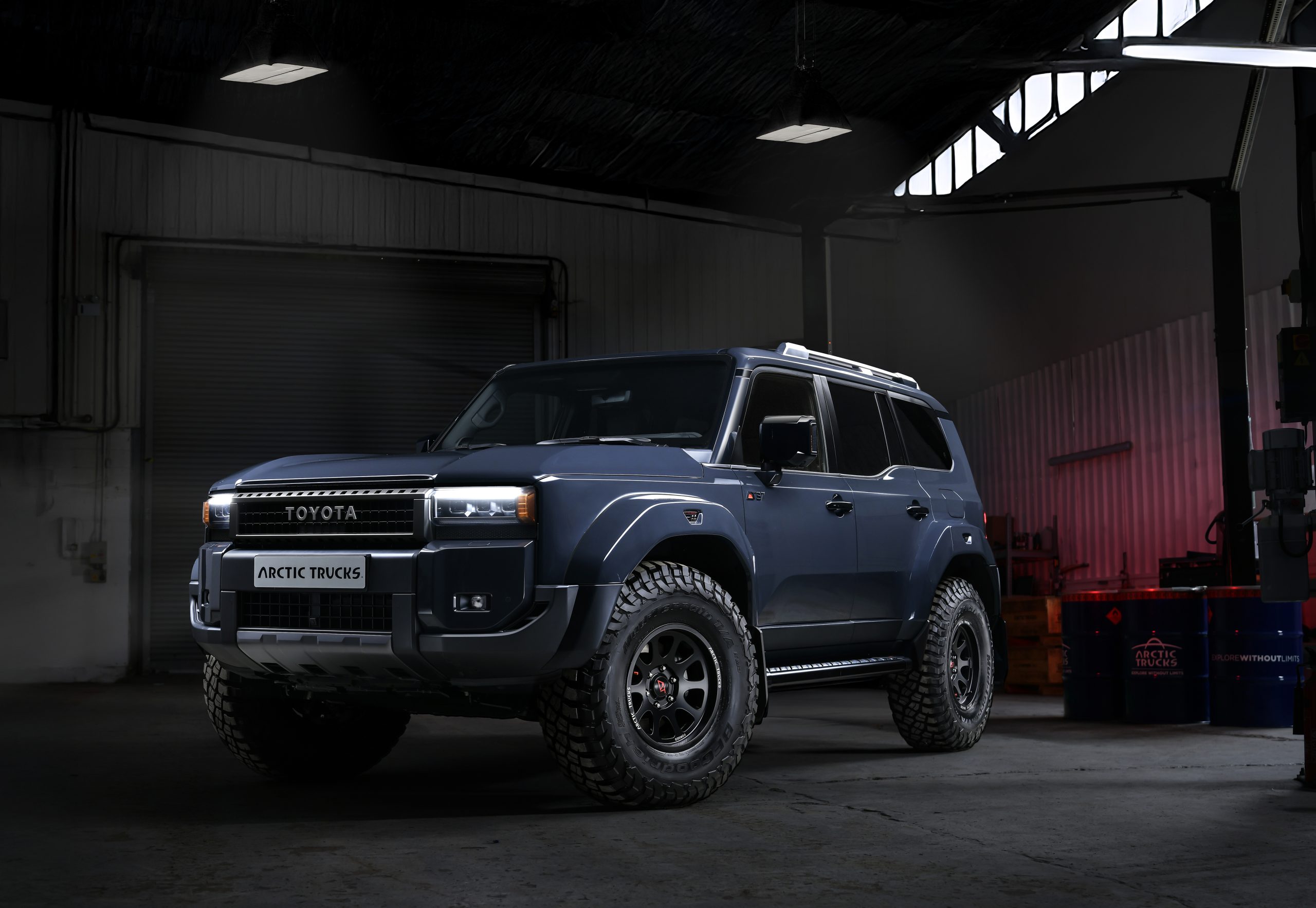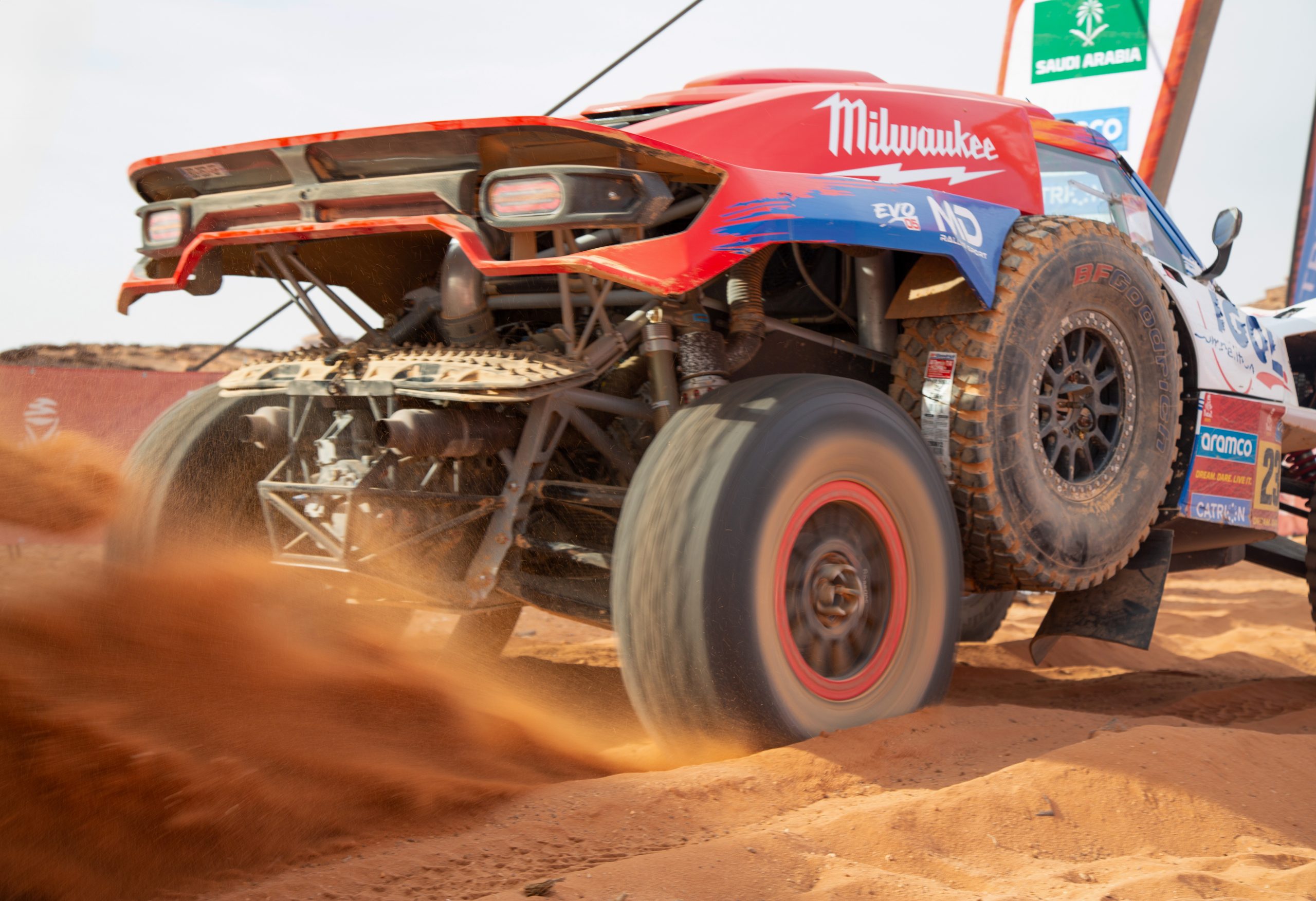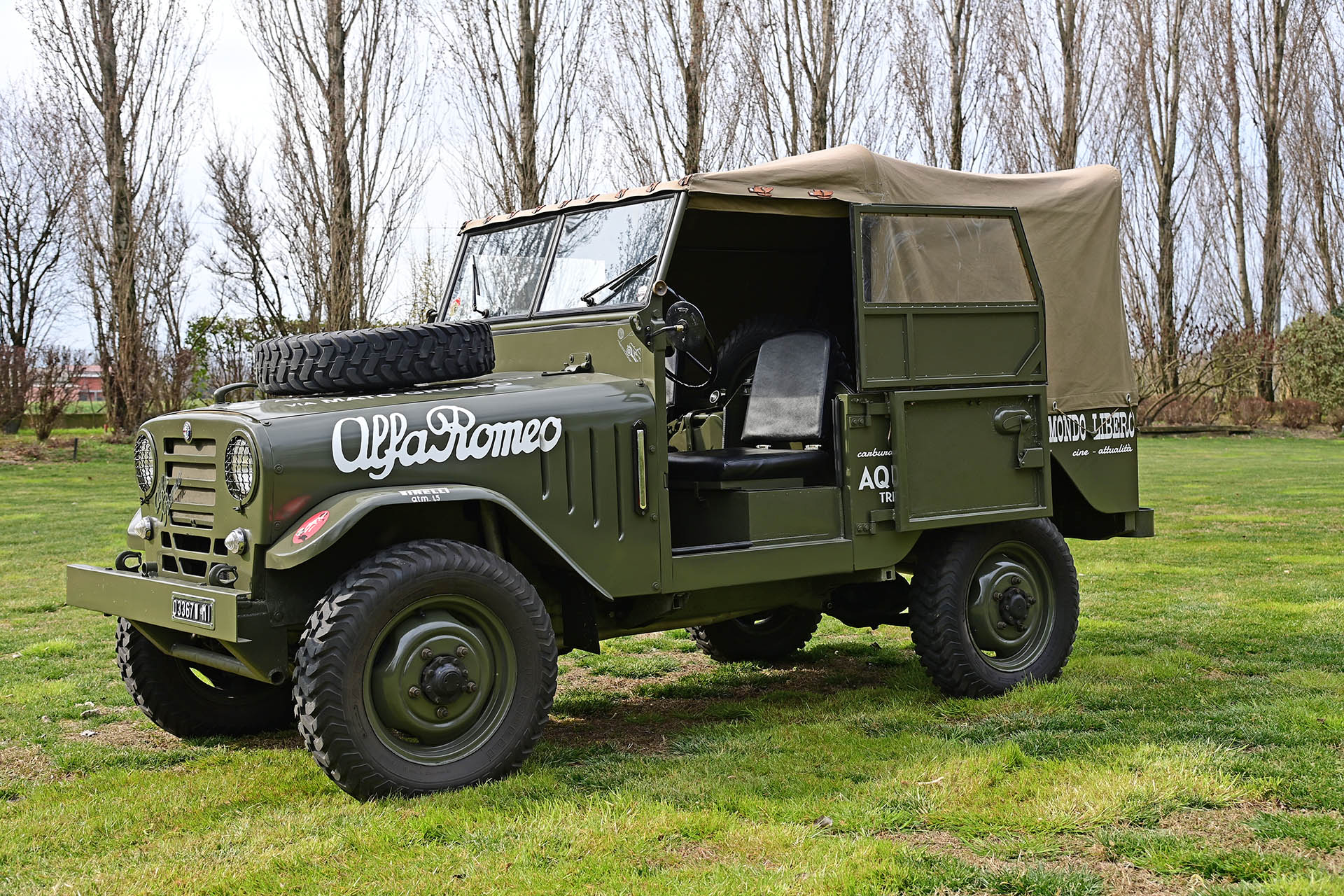While Toyota has been busy updating its off-road product lineup for the American public with a new Land Cruiser, a refreshed small pickup, and the new 4Runner SUV, it has more quietly also released a mildly updated version of the 70-Series Land Cruiser from the 1980s. Outside of Japan, it’s sold to the public only at Australian Toyota dealerships, although you can actually buy one in North America. The one caveat: you have to own a mine.
Well, technically, so long as your 70-Series stays off public roads, you’re in the clear. But it’s at gold and copper mines, and nearly every type of resource-extraction site across the globe, that you can spot Land Cruisers working alongside huge dump trucks and excavators. Land Cruisers crawl slowly through the darkness, or down into open-pit mines. Some go into the inky black underworld brand new and don’t emerge again until they are bound for the boneyard. They are almost universally 70-Series models, Land Cruisers of the old school, simple in construction and as tough as the business end of a pickaxe.

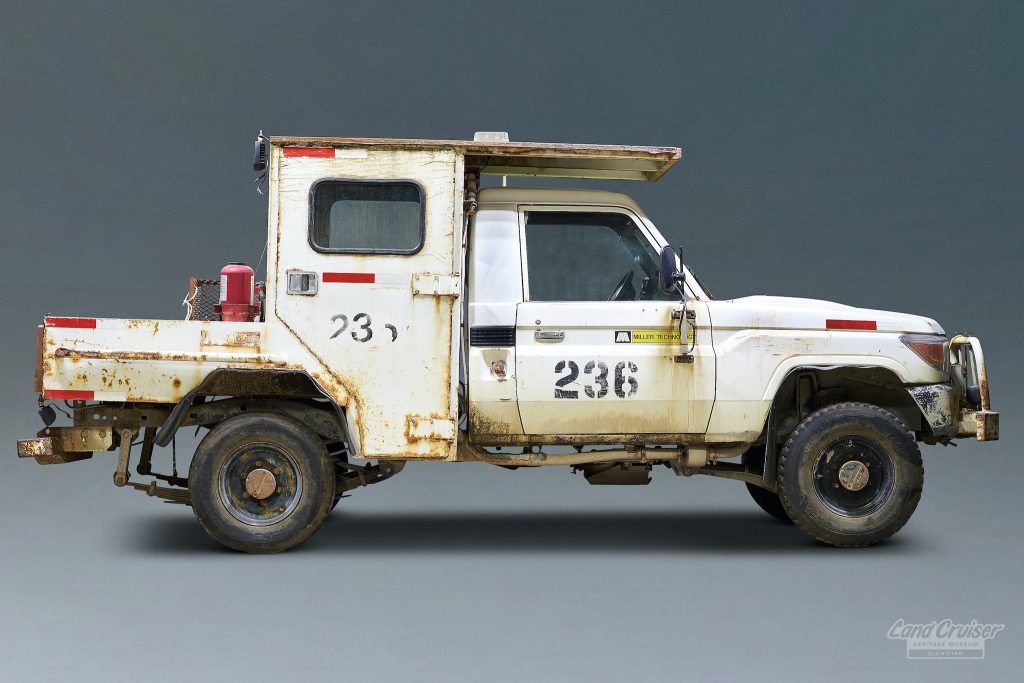
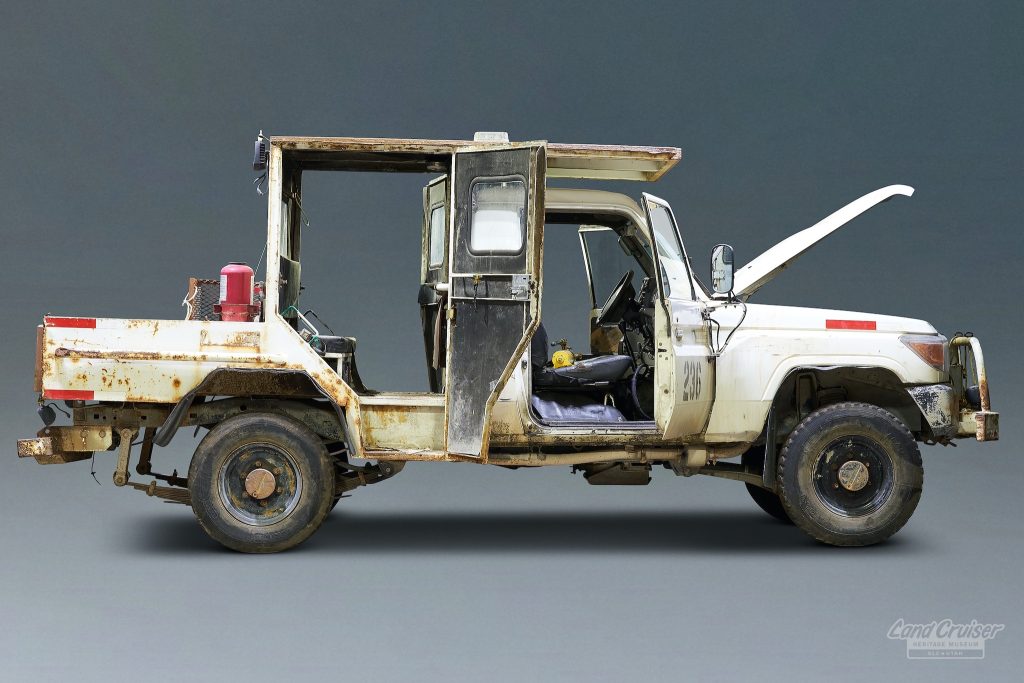
“It’s an important example of commercial usage of the Land Cruiser,” says Dan Busey of the Land Cruiser Heritage Museum in Salt Lake City, Utah, “My understanding is that they’re the only things tough enough to survive the extremely harsh environment in a mine.”
A few years ago, the museum acquired a 2012 Land Cruiser modified by Miller Technology of North Bay, Ontario. Just over a decade old and with the equivalent of 36,000 miles on the odometer, it looks like it spent that decade on the surface of Mars. It’s rusty, battered, slightly bowed in the middle, and absolutely covered in the dust and dirt of a mine. But despite the tattered seats and bare bones interior, there’s something magnificent about it. This is no shiny Range Rover parked on Rodeo Drive. This is a working truck, tired after its last shift, but still tough as nails.
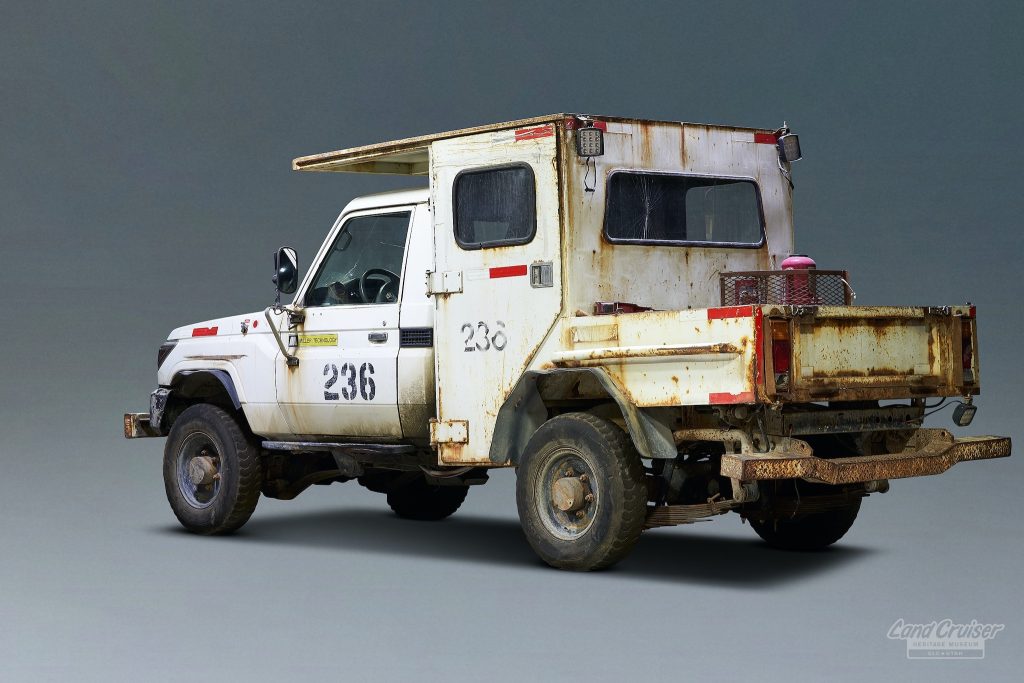
Miller Technology is just one of a handful of specialist mining equipment manufacturers that prepare Land Cruisers for the rough and tumble of mineral extraction. The Toyotas come directly from Japan, in a very basic cab and chassis form, and are heavily modified for their purpose. They can be set up with cranes or booms for mechanics working on huge mining equipment, are sometimes fitted with armour to protect the roof from falling rocks, can be built to carry as many as eight passengers to and from the rock face, or kitted out with a scissor lift.
Replacing the bumpers with heavy steel units is standard fare for an industry where stuff often ends up hitting other stuff. Perhaps a more technologically interesting upgrade is the sealed wet-clutch brakes, which are encased in housings that prevent dust and debris from scoring the rotors.
Depending on the application, Miller Tech can also swap out the diesel powertrain for a battery pack and electric drive. Standard equipment on these 70-Series workhorses is the Toyota 1HZ, a 4.2-litre inline-six that is good for about 130bhp and 210lb ft of torque, and has the working lifespan of Stonehenge. Swapping to electric allows for reduced emissions in confined spaces, but is very expensive, essentially doubling the cost. According to Miller Tech, the demand ebbs and flows depending on specific projects and available government grants.
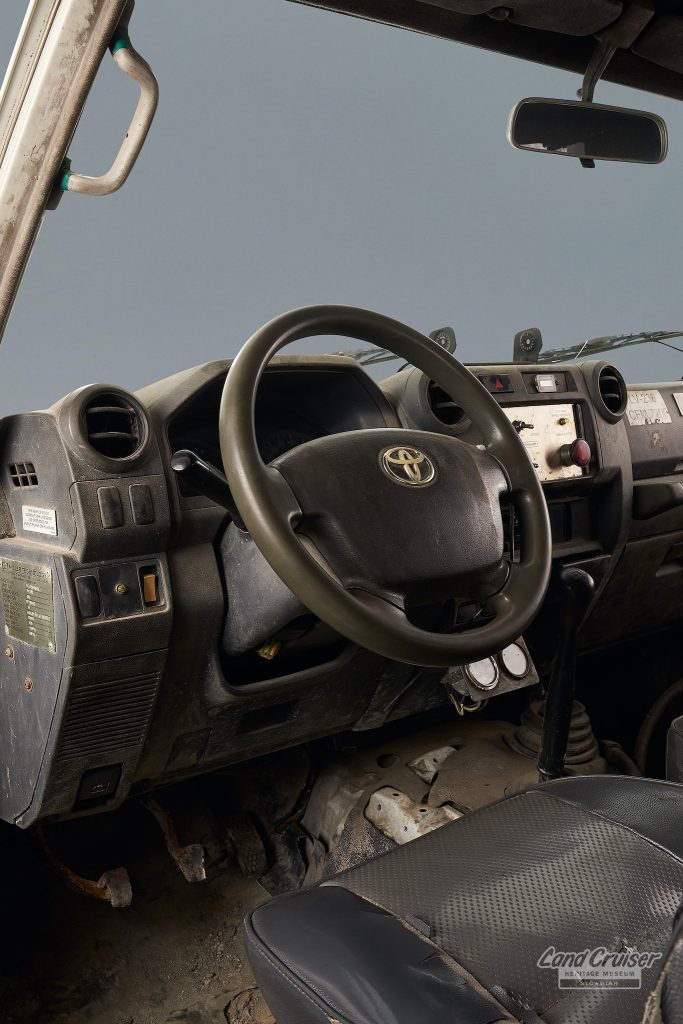
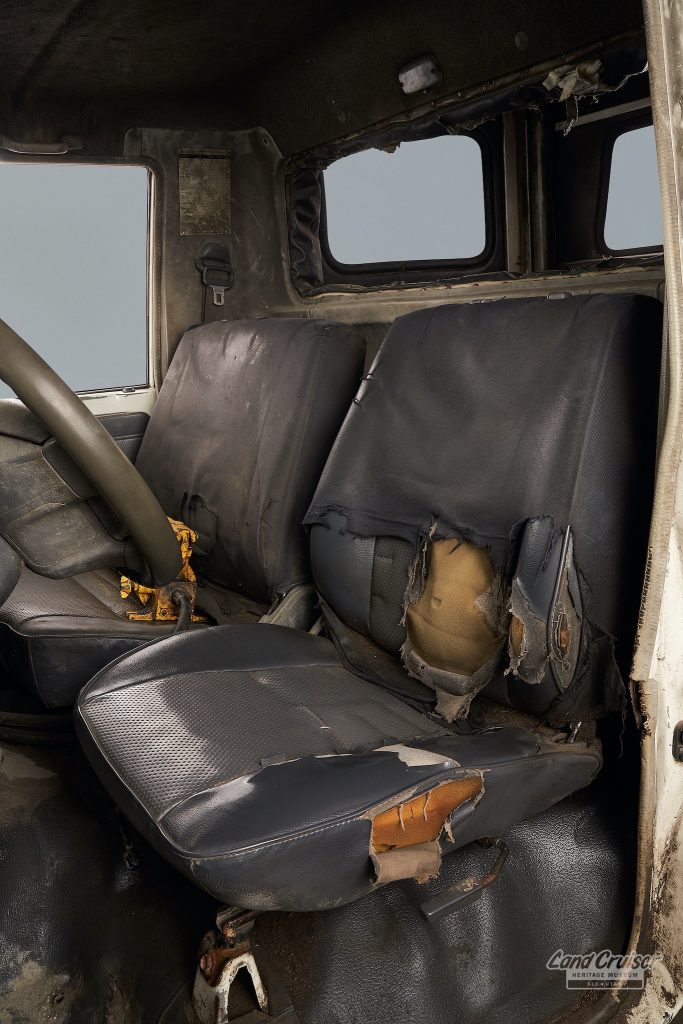
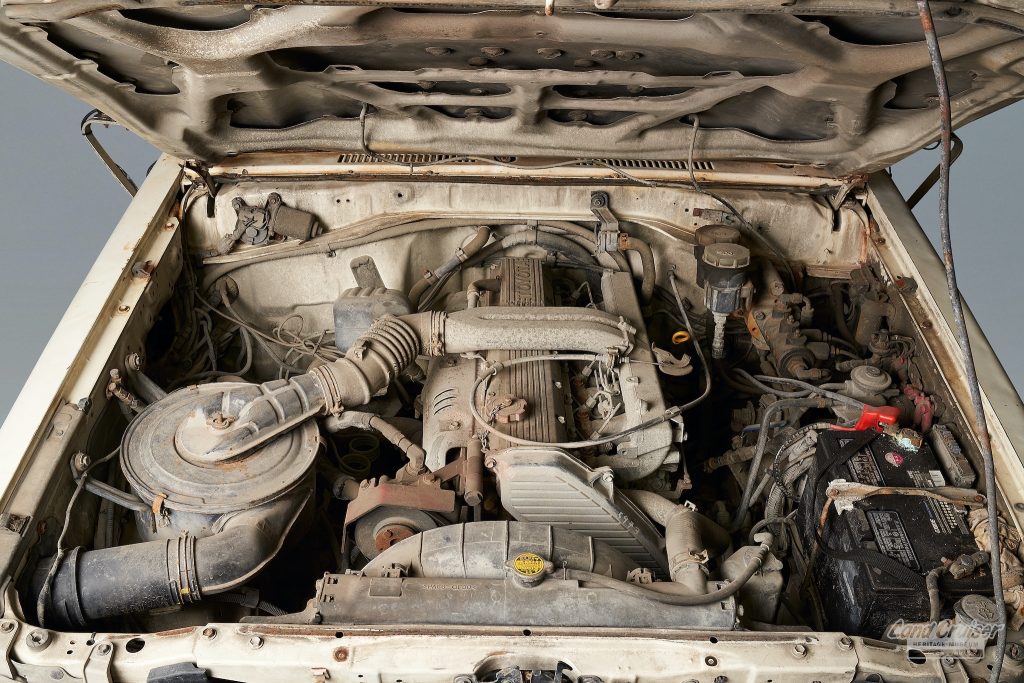
Around the world, this generation of Land Cruiser and the contemporary Hilux pickup have cemented Toyota’s reputation for incredible durability and endurance offroad. Probably the best example is the Harb al-Tūtūya, or Great Toyota War of 1987, in which a bunch of irregular forces in Toyotas threw the well-equipped occupying Libyan forces out of Chad. You find Land Cruisers in the most desolate places in the world, from the sands of the world’s deserts to the emptiness of the Australian Outback.
Patrick Redmond is a geologist, and has worked in mining and mineral exploration around the world. He recounts buying a couple of Land Cruisers for cash in a market in Mongolia, and the way all mining Toyotas in South America seem to be painted red for unknown reasons, and the first time he drove a long-wheelbase one in Australia and nearly hit a kangaroo.
“In the Outback, a Land Cruiser is basically your lifeline,” he says.
But underground is even tougher. Copper mining, for instance, is an acidic process, and the equipment that works in a copper mine is under constant attack on a molecular-level. In this kind of environment, even a Land Cruiser might only last a few years before partially dissolving into scrap. There’s no sentimentality here: these Toyotas are bought, consumed, and then sent to the boneyard. It’s not legal to road-register them as they do not conform to regulations governing crash protection or emissions controls.
But that simplicity makes them tough. With roll-up windows and barely any electronics governing the diesel engine, this generation of Land Cruiser is exactly the kind of machine that gave its nameplate a global reputation. Land Rover owners know that their rigs are up for adventure – but you’d better bring your toolkit and wiring diagram along. A 70-Series Land Cruiser is like a shovel. You can break it, but you really have to work at it.
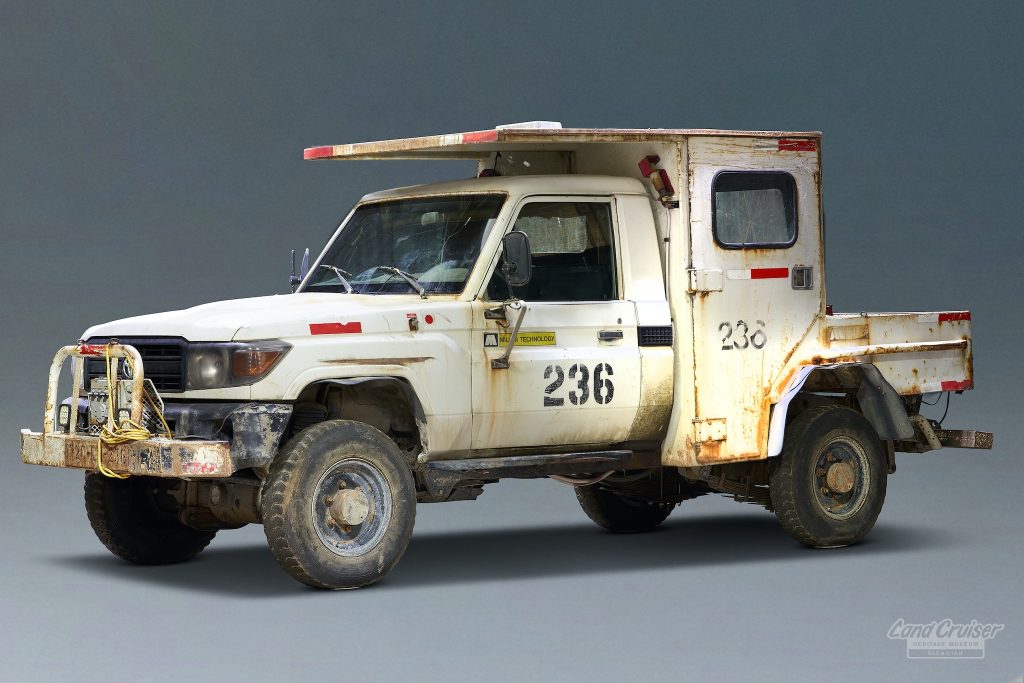
The life of a mining Land Cruiser is nasty, brutish, and short. The industry average is just five years of service. Looking at the Land Cruiser Heritage Museum’s example, you can see why they don’t last long, at least compared to civilian use. It’s just that nearly everything else that mining operations have tried to use fail under pressure even faster.
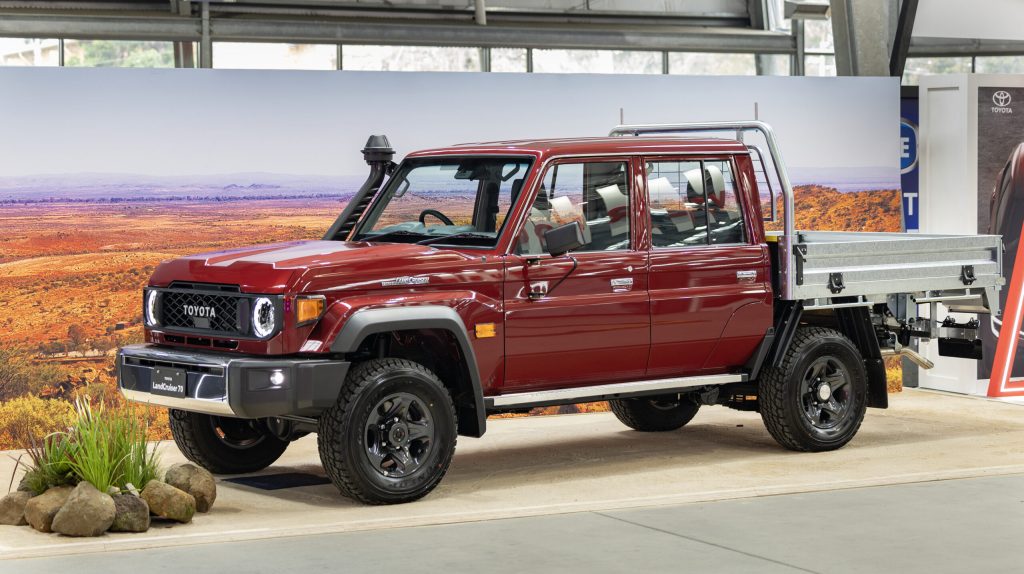
Back on the earth’s surface, between the perils of kangaroos and the ruggedness of pretty much any location outside of city limits, it’s perhaps no surprise that Toyota still sells its 70-Series brand-new down under. An entry-level Land Cruiser workmate-grade truck starts from under seventy thousand dollary-doos, or just over £32,000.
The continued use of the 70-Series as a working truck does mean that Toyota still makes parts available. If you have a Land Cruiser of this vintage, you already know that it’s as tough as the axe of Gimli, son of Glóin. A strength forged in steel, capable of delving beneath the earth, only coming out again when the job is done.

